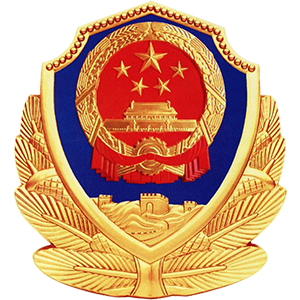Sampling Consensus of 2nd-Order Multi-Agent Systems Based on Time-Varying Topology
-
摘要:
基于速度一致位移差保持不变的一致性概念,研究了二阶多智能体系统在时变拓扑下的采样一致性问题。首先,引入虚拟领导者,将具有时变拓扑结构的多智能体系统的采样一致性问题转换为误差系统的采样控制稳定性问题。其次,通过预估采样误差,研究采样误差对系统达到一致性的影响。最后,应用Lyapunov稳定性理论,分析所构造的误差系统的稳定性,并给出该误差系统最终稳定的充分条件。数值仿真结果验证了理论分析的有效性和正确性。
Abstract:The sampling consensus of 2nd-order multi-agent systems with time-varying topology was investigated based on the constant position difference and the consistent speed. Firstly, the virtual leader was introduced and the sampling consensus problem of multi-agent systems was transformed into the stability problem of the corresponding error system. Secondly, with estimation of the sampling errors, the influence of sampling errors on system consistency was studied. Finally, by virtue of the Lyapunov stability theory, the stability of the constructed error system was analyzed, and a sufficient condition for the stability of the error system was given. The numerical simulation results verify the effectiveness and correctness of the theoretical analysis.
-
Key words:
- multi-agent system /
- consensus /
- sampled data /
- time-varying topology
-
-
[1] JADBABAIE A, JIE L, MORSE A S. Coordination of groups of mobile autonomous agents using nearest neighbor rules[J]. IEEE Transactions on Automatic Control, 2003, 48(6): 988-1001. doi: 10.1109/TAC.2003.812781 [2] TIAN B, LU H, ZUO Z, et al. Fixed-time leader-follower output feedback consensus for second-order multiagent systems[J]. IEEE Transactions on Cybernetics, 2018, 49(4): 1545-1550. [3] 孙凤琪. 不确定时滞摄动滤波误差动态系统的稳定性分析[J]. 应用数学和力学, 2020, 41(8): 899-911.SUN Fengqi. Stability analysis of uncertain time-delay perturbed filtering error dynamic system [J]. Applied Mathematics and Mechanics, 2020, 41(8): 899-911. (in Chinese) [4] WU Y, WANG Z, DING S, et al. Leader-follower consensus of multi-agent systems in directed networks with actuator faults[J]. Neurocomputing, 2018, 275: 1177-1185. doi: 10.1016/j.neucom.2017.09.066 [5] GUO W, LÜ J, CHEN S, et al. Second-order tracking control for leader-follower multi-agent flocking in directed graphs with switching topology[J]. Systems & Control Letters, 2011, 60(12): 1051-1058. [6] TANG S X, QI J, ZHANG J. Formation tracking control for multi-agent systems: a wave-equation based approach[J]. International Journal of Control Automation and Systems, 2017, 15(6): 2704-2713. doi: 10.1007/s12555-016-0562-0 [7] REN J, SONG Q, GAO Y, et al. Leader-following consensus of nonlinear singular multi-agent systems under signed digraph[J]. International Journal of Systems Science, 2020, 52(4): 1-14. [8] REN J, SONG Q, LU G. Event-triggered bipartite leader-following consensus of second-order nonlinear multi-agent systems under signed digraph[J]. Journal of the Franklin Institute, 2019, 356(12): 6591-6609. doi: 10.1016/j.jfranklin.2019.06.034 [9] SONG Q, CAO J, YU W. Second-order leader-following consensus of nonlinear multi-agent systems via pinning control[J]. Systems & Control Letters, 2010, 59(9): 553-562. [10] REN C E, CHEN L, CHEN C, et al. Quantized consensus control for second-order multi-agent systems with nonlinear dynamics[J]. Neurocomputing, 2016, 175: 529-537. doi: 10.1016/j.neucom.2015.10.090 [11] CAO M, XIAO F, WANG L. Second-order leader-following consensus based on time and event hybrid-driven control[J]. Systems & Control Letters, 2014, 74: 90-97. [12] ZHANG W B, TANG Y, HAN Q L, et al. Sampled-data consensus of linear time-varying multi-agent networks with time-varying topologies[J]. IEEE Transactions on Cybernetics, 2020, 52(1): 128-137. [13] BASIN M V, ELVIRA-CEJA S, SANCHEZ E N. Central suboptimal mean-square H∞ controller design for linear stochastic systems[J]. International Journal of Systems Science, 2011, 42(5): 821-827. doi: 10.1080/00207721.2010.543493 [14] TAN F, ZHOU B, DUAN G R. Finite-time stabilization of linear time-varying systems by piecewise constant feedback[J]. Automatica, 2016, 68: 277-285. doi: 10.1016/j.automatica.2016.01.003 [15] ZHOU B, EGOROV A V. Razumikhin and Krasovskii stability theorems for time-varying time-delay systems[J]. Automatica, 2016, 71: 281-291. doi: 10.1016/j.automatica.2016.04.048 [16] ZHOU B. On asymptotic stability of linear time-varying systems[J]. Automatica, 2016, 68: 266-276. doi: 10.1016/j.automatica.2015.12.030 [17] MAZENC F, MALISOFF M. Stabilization and robustness analysis for time-varying systems with time-varying delays using a sequential subpredictors approach[J]. Automatica, 2017, 82: 118-127. doi: 10.1016/j.automatica.2017.04.020 [18] TONG P, CHEN S, WANG L. Finite-time consensus of multi-agent systems with continuous time-varying interaction topology[J]. Neurocomputing, 2018, 284: 187-193. doi: 10.1016/j.neucom.2018.01.004 [19] WEI R, BEARD R W. Consensus seeking in multiagent systems under dynamically changing interaction topologies[J]. IEEE Transactions on Automatic Control, 2005, 50(5): 655-661. doi: 10.1109/TAC.2005.846556 [20] XUE L, ZHENG Y. Finite-time consensus of switched multiagent systems[J]. IEEE Transactions on Systems Man & Cybernetics Systems, 2017, 47(7): 1535-1545. [21] MENG H, CHEN Z, MIDDLETON R. Consensus of multi-agents in switching networks using input-to-state stability of switched systems[J]. IEEE Transactions on Automatic Control, 2018, 63(11): 3964-3971. doi: 10.1109/TAC.2018.2809454 [22] WU X, YANG T, CAO J, et al. Distributed consensus of stochastic delayed multi-agent systems under asynchronous switching[J]. IEEE Transactions on Cybernetics, 2017, 46(8): 1817-1827. [23] ROY C N, SRIKANT S, DEBASISH C. A new condition for asymptotic consensus over switching graphs[J]. Automatica, 2018, 97: 18-26. doi: 10.1016/j.automatica.2018.07.018 [24] 茆汉国, 张建德. 多智能体系统的非震颤固定时间一致性[J]. 计算机工程与应用, 2020, 56(4): 158-162. (MAO Hanguo, ZHANG Jiande. Nonchattering fixed time consensus in multi-agent systems[J]. Computer Engineering and Applications, 2020, 56(4): 158-162.(in Chinese) doi: 10.3778/j.issn.1002-8331.1811-0223MAO Hanguo, ZHANG Jiande. Nonchattering fixed time consensus in multi-agent systems[J]. Computer Engineering and Applications, 2020, 56(4): 158-162. (in Chinese)) doi: 10.3778/j.issn.1002-8331.1811-0223 [25] GAO Y, WANG L. Sampled-data based consensus of continuous-time multi-agent systems with time-varying topology[J]. IEEE Transactions on Automatic Control, 2011, 56(5): 1226-1231. doi: 10.1109/TAC.2011.2112472 [26] XIE T, LIAO X, LI H. Leader-following consensus in second-order multi-agent systems with input time delay: an event-triggered sampling approach[J]. Neurocomputing, 2016, 177: 130-135. doi: 10.1016/j.neucom.2015.11.013 [27] LIU S, LI T, XIE L H, et al. Continuous-time and sampled-data-based average consensus with logarithmic quantizers[J]. Automatica, 2013, 49(11): 3329-3336. doi: 10.1016/j.automatica.2013.07.016 [28] 刘孝琪, 康怀祺, 曾超. 多智能体系统初始状态一致性应用研究[J]. 计算机工程与应用, 2014, 50(13): 53-56. (LIU Xiaoqi, KANG Huaiqi, ZENG Chao. Application research in multi-agent system about consensus on initial state[J]. Computer Engineering and Applications, 2014, 50(13): 53-56.(in Chinese) doi: 10.3778/j.issn.1002-8331.1208-0133LIU Xiaoqi, KANG Huaiqi, ZENG Chao. Application research in multi-agent system about consensus on initial state[J]. Computer Engineering and Applications, 2014, 50(13): 53-56. (in Chinese)) doi: 10.3778/j.issn.1002-8331.1208-0133 [29] WANG C, JI H. Robust consensus tracking for a class of heterogeneous second-order nonlinear multi-agent systems[J]. International Journal of Robust & Nonlinear Control, 2015, 25(17): 3367-3383. [30] 刘晨, 刘磊. 基于事件触发策略的多智能体系统的最优主-从一致性分析[J]. 应用数学和力学, 2019, 40(11): 1278-1288. (LIU CHEN, LIU LEI. Optimal leader-follower consensus of multi-agent systems based on the event-triggered strategy[J]. Applied Mathematics and Mechanics, 2019, 40(11): 1278-1288.(in Chinese)LIU CHEN, LIU LEI. Optimal leader-follower consensus of multi-agent systems based on the event-triggered strategy[J]. Applied Mathematics and Mechanics, 2019, 40(11): 1278-1288. (in Chinese)) [31] 周军, 童东兵, 陈巧玉. 基于事件触发控制带有多时变时滞的主从系统同步[J]. 应用数学和力学, 2019, 40(12): 1389-1398. (ZHOU Jun, TONG Dongbing, CHEN Qiaoyu. Synchronization of master-slave systems with multiple time-varying delays based on the event-triggered mechanism[J]. Applied Mathematics and Mechanics, 2019, 40(12): 1389-1398.(in Chinese)ZHOU Jun, TONG Dongbing, CHEN Qiaoyu. Synchronization of master-slave systems with multiple time-varying delays based on the event-triggered mechanism[J]. Applied Mathematics and Mechanics, 2019, 40(12): 1389-1398. (in Chinese)) [32] SU Y F, HUANG J. Cooperative global output regulation of heterogeneous second-order nonlinear uncertain multi-agent systems[J]. Automatica, 2013, 49(11): 3345-3350. doi: 10.1016/j.automatica.2013.08.001 [33] YI C B, XU C, FENG J W, et al. Leading-following consensus for multi-agent systems with event-triggered delayed impulsive control[J]. IEEE Access, 2019, 7: 136419-136427. [34] KIM H, SHIM H, BACK J, et al. Consensus of output-coupled linear multi-agent systems under fast switching network: averaging approach[J]. Automatica, 2013, 49(1): 267-272. doi: 10.1016/j.automatica.2012.09.025 [35] HORN R A, JOHNSON C R. Matrix Analysis[M]. New York: Cambridge University Press, 1985. [36] 廖晓昕. 稳定性的理论、方法和应用[M]. 2版. 武汉: 华中科技大学出版社, 2010.LIAO Xiaoxin. Theory, Method and Application of Stability[M]. 2nd ed. Wuhan: Huazhong University of Science and Technology Press, 2010. (in Chinese) -





 下载:
下载:



 渝公网安备50010802005915号
渝公网安备50010802005915号